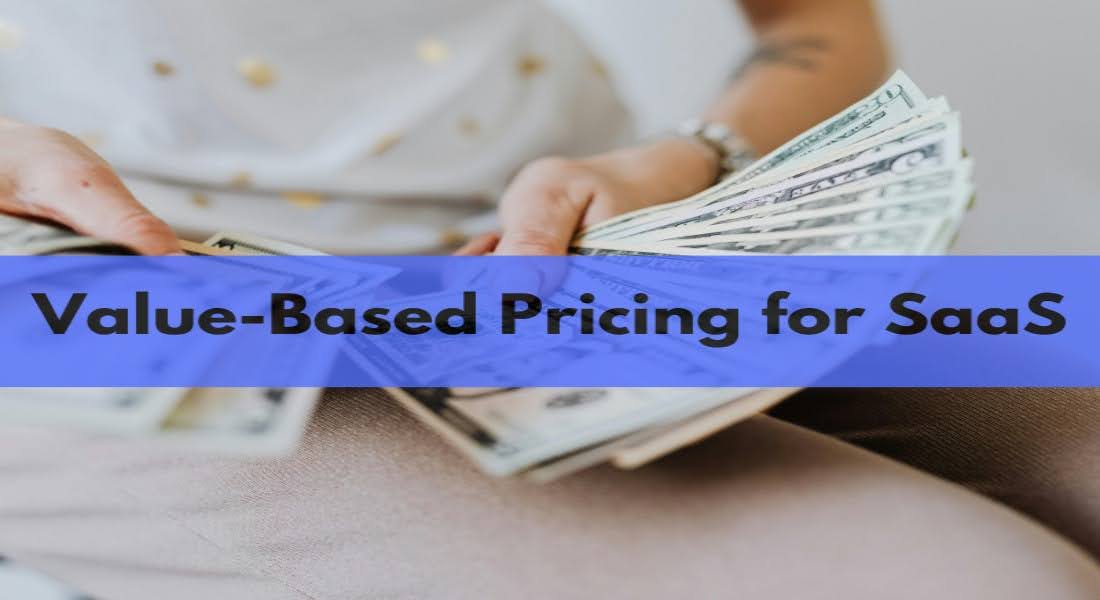
在决定服务或产品的价格时,价值才是王道。“基于价值的定价”是指在定价商品和服务时,重点考虑的是客户对商品和服务的重视程度,而不是生产成本或市场竞争等因素。
使用这种方法,您可以了解您的产品或服务对目标受众的价值。如果您知道解决方案提供的价值,并能为其定价,则可以收取更高的费用。基于价值的定价让您可以收取与产品或服务价值相符的费用,以充分利用您的独特卖点。
除了单纯增加成本之外,您上次对 SaaS 定价策略进行全面评估是什么时候?除非您对业务策略进行了重大更改,否则您可能从公司成立前的规划阶段就没有审查过定价策略。
如果您想实现利润最大化并获得成功,选择正确的价格计划至关重要,无论您是经验丰富的 SaaS 提供商还是刚刚起步。在当今快节奏的数字市场中,您的 SaaS 公司必须采用基于价值的定价。
本文将 解释基于价值的定价如何彻底改变你的业务。这种方法强调了制定价格时需要反映出客户对您所提供服务的感知价值。
基于价值的定价是一种计算策略,用于确定您企业的商品和服务的收费标准。传统的定价方法包括加价、考虑劳动力和生产成本以及采用一刀切的定价方法。这些方法可能适用于服装或跑步机等有形产品,但它们更适合软件的动态领域。
SaaS(软件即服务)领域的产品和服务不断变化,持续更新和增强是产品的重要组成部分。在这种情况下,使用传统的定价技术可能会导致低估您的服务。
软件公司可以通过实施基于价值的定价,根据其产品的感知价值向客户收费。这就是全部内容。但困难的部分是弄清楚客户认为您的产品或服务到底有多有价值。如果您收费过高,您可能会失去业务;如果您收费过低,您会损失金钱。
例如,项目管理工具的成本可能取决于其优势,例如改进的工作跟踪、更快的沟通和提高的团队效率。同样,营销自动化平台的价格可能取决于它在培育、潜在客户生成和转化率优化方面提供的价值。
有效基于价值的定价的秘诀在于深入了解目标市场的问题、障碍和目标。通过衡量产品或服务对这些领域的影响,您可以选择准确代表其对客户价值的定价。
您的软件的价值与其用户数量成正比。拥有 5 个活跃用户的企业无法与拥有 5,000 个活跃用户的企业竞争。
如果客户进行研究,他们就会发现选择一家 SaaS 提供商的人数明显多于选择另一家 SaaS 提供商的人数。潜在客户会认为拥有 5 名活跃用户的公司价值较低,无论他们拥有哪些优势,例如卓越的客户帮助。
在制定基于价值的定价策略时,请考虑平台的潜在用户获取成本。您可能会达成一项协议,即公司可以通过购买更多门票来节省资金。或者,增加用户数量可能会让他们获得更多存储功能或与合作伙伴平台的接口。
仔细考虑如何细分您的产品以吸引更多客户。您的 SaaS 业务将从您的庞大客户群中受益。
通过提供更全面的集成来提升产品的价值,使用户能够简化任务、降低成本、减少工作量、保持最新状态并最大程度地减少压力。我们最大的关注点是提升客户体验。考虑提高平台的价格,因为它提供了显著的附加值。
例如,如果你有一个与 Shopify 上的批量订购应用,您可以将其与其他 SaaS 产品无缝集成,以增强客户互动。这种集成对两种应用程序都有利。在这种情况下,将其与订阅或货币转换器应用程序结合使用可能是合适的。
最后,软件的价值随着其特性和功能允许用户做更多事情而增加。展示特性、功能和系统提供的好处可能具有挑战性。
“免费增值”模式是一种提高产品价值的简单方法。之后,您可以引入更多级别的付费定价。
功能和性能在更高的价格点上可用。下一层级可能提供全天候实时服务,而免费层级允许在特定时段提供电子邮件支持。由于此功能,第二层级突然变得更有价值。
记得经常进行脉搏检查或简短调查来衡量客户对您的功能的满意度。
他们多久使用一次他们喜欢的方面?关于您的 SaaS 公司,人们希望您提供哪些功能?仔细听取用户的意见并将其纳入您的服务以改进它。根据这三个因素考虑您公司的商业模式并进行相应的评估。它们完美地互补。
您的公司的价值与您吸引的用户数量以及您提供的服务和集成数量成正比。
此外,提高销量的方法之一是展示您的产品为客户带来的价值。
如果您已经证明您的客户愿意支付溢价,您可以从更高的价格点开始。随着您在该领域的知识越来越丰富,您可以不断改进您的产品并加入新功能,从而让您相应地调整您的定价。实施基于竞争对手的定价方法意味着复制您的竞争对手的策略。
如果他们应该尽职尽责,提供更高的价格,情况会怎样?如果你不能使价格与众不同,你可能会牺牲潜在的收入。最大化你的收入需要关注你的主要收入来源:客户。此外,随着你的公司和产品供应的不断发展,每六个月定期重新评估你的定价策略至关重要。
收集支付意愿数据需要付出专门的努力,但结果值得投资。再一次,支付意愿是指客户愿意为您的产品或服务支付的最高价格。这取决于几个因素,但它是了解任何给定时间总体需求的绝佳方法。凭借专家的专业知识,基于价值的定价策略背后的研究提供了具体的数据,迫使您设定一个产生利润的价格。
了解客户对您的产品或服务的支付意愿对于制定可靠且具有竞争力的定价策略至关重要。凭借专业知识,您可以做出假设。
如果您从消费者的角度考虑您的功能和产品,您就可以发现消费者的需求。像专家一样思考将帮助您开发改进产品的新方法。
要让您的商品更上一层楼,您需要想办法改进它们,并找到可以销售更多商品的地方。为您的服务添加更多功能可以提高您的收入,并为客户提供更具吸引力的体验。
通过基于价值的定价优先考虑客户满意度。基于价值的定价的客户数据通常通过客户反馈、调查和访谈来收集。
向消费者提供这种程度的关注有望增强与现有客户的关系。通过展示您所在领域的专业知识,您将能够更好地理解和满足他们的需求,从而赢得他们对您竭诚帮助的赞赏。建立融洽关系对于提高保留率和减少客户流失至关重要。
市场细分是一种战略方法,根据不同的衡量标准、需求或描述对潜在客户进行分类。随后,您可以分析每个细分市场,以确定他们不满意的领域、最有利的情况以及他们愿意为您的软件即服务 (SaaS) 分配的成本。
产品稀缺性是指产品供应量相对于需求量的比例。通常,有限的供应量会让人觉得产品价值增加,并可能为提高价格提供理由。识别甚至培养稀缺性可能对您的定价策略有益。
如果您的 SaaS 在竞争中脱颖而出,或者只有少数软件公司提供类似的服务,那么市场就会产生一种稀缺感。
产品差异化使您的产品在市场上脱颖而出。对于 SaaS 公司而言,各种因素都会影响产品差异化。这些因素包括功能、设计元素、可用性、易用性、定制等。
当使用基于价值的定价时,独特的产品功能可以使您的软件有别于竞争对手,从而影响客户,使他们更愿意支付更高的价格或忍受不便以获得您的产品。拥有独特的产品可以创造一种稀缺感。
在利润最大化和激烈竞争的挑战性环境中,基于价值的定价方法是 SaaS 公司的一个强大工具。通过确定您为客户创造的价值并专注于此,您可以收取反映解决方案实际收益的价格。这是通过分析目标受众并充分传达产品的独特优势来实现的。如果您很久以前就评估过定价政策,请尝试采用基于价值的定价模型来释放 SaaS 企业的真正盈利能力。